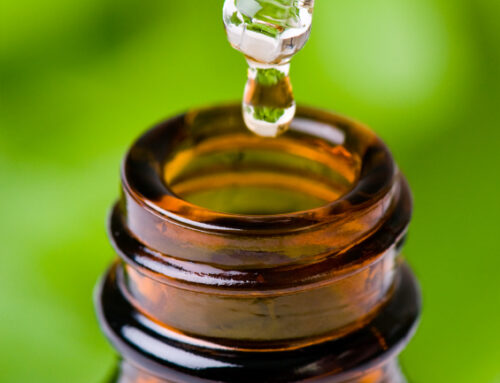
With so many neti pots on the market these days, I can’t help but write about the plastic ones. In 1996 when we began producing our Baraka neti pot, there were only a handful of companies making them, and like ours, most were ceramic. However, in April 2007 Dr. Oz introduced nasal rinsing to the general public, and it went from being in a niche market to the mainstream. Suddenly neti pots could be found everywhere and most of them were made of plastic.
While I’m glad more people are nasal rinsing, there are a few things you should know about plastic neti pots.
- Few neti pot on the current market are made from BPA-free or food grade plastics. BPA is a known carcinogen found in many plastics. It can leech into anything that’s put in it – which means the saline solution for your neti pot. For more information on eco-plastics view our previous blog on the subject.
- Plastic can easily harbor bacteria. Manufacturers of plastic nasal rinsing devices recommend that you replace their product every year. They warn you to look for any “discoloration” in the plastic. What they don’t mention is the discoloration is often caused by mold or bacteria.
- If you have a plastic neti pot with a hollow handle, bacteria is even more likely to be present. Since the handle is narrow and curved, it receives less water flow and is very difficult to clean, making it an ideal breeding ground for pathogens. If you own a plastic pot with a handle- or know someone who does- do your own investigation.
- Salt can deteriorate plastics; therefore, you will have to replace your nasal rinsing device more frequently. The more replacement products you buy, the more waste is produced for our landfills.
- Some plastics can emit a strange odor as they age. These are the cheaper plastics and their spout can have rough edges which hurt the nostrils.
Many people want a plastic neti pot to travel with because it won’t break. I fly frequently and have never had that problem with my ceramic neti pot. I wrap it in my clothes and put it into the middle of my suitcase. However, if you don’t trust your ability to pack it safely or the airline’s ability to not crush your suitcase, at least consider a steel or copper neti pot.
Plastics are a necessity in life. I think of the pacemaker in my father’s heart- a life saver! I try to use plastic only when necessary. I see the effects of gratuitous plastics while traveling in developing nations and it isn’t pretty. They don’t have the ability to hide it like we do in the United States. Every day when I’m offered something made of a plastic I don’t absolutely need, I say no. It’s only my no, but if more of us do that, we can make positive impact on the future of our planet.






where do i get a ceramic neti pot???
You can get a ceramic neti pot right here on our website. We also sell to many natural food markets, yoga studios and Co-Ops throughout the country. Your local Whole Foods may be a great place to start. Contact us with any further questions.
Ceramic still has small pores that bacteria stays in (even when you wash it). What about stainless steel? I hate metals though. Please advise.
Stainless Steel neti pots are available on the market. Of course as neti pot producers, we feel comfortable with ceramic neti pots and believe they can be clean enough to not worry about bacteria. However, if you have any hesitation you should use what makes you feel most comfortable.
I’m sure you’re open to constructive criticism and questioning.
1. The water is only in plastic for a short while, there will be no significant leaching at all.
2. Plastic is NOT porous!! Where are you getting this from? Otherwise your soda bottles will be leaking on the shelves!
3. Yes, may be true. So just use one without a handle.
4. If only salt broke down plastics! Then the ocean will not have a problem of plastic garbage that will be there for the next 100 years!
5. You only use a neti pot for a few minutes. There are many models.
Your information is quite false!
Hi TC. Thanks for your feedback. Interesting points you have given, but one thing you might be over looking is the many different ways people use a neti pot. I have heard of people filling their neti pot with boiling water and adding salt and then waiting hours before nasal rinsing. I have also heard of people creating a saline solution, leaving it over night in the neti pot and then adding more warm water in the morning. Or other people leave their nasal rinsing device in the shower all the time- therefore always in contact with water and bacteria. These ways are not “right or wrong” just shows how we shouldn’t base experience across the board when people may approach things very differently than ourselves. Plastic is not porous in the fact they will leak water, but bacteria can attach itself to the plastic and maybe there without knowledge of the end user. Please read other neti pot companies website- they suggest that plastic neti pots should be replaced on a yearly basis! I’m not making that up! Salt impacts the plastic and while sure it doesn’t dissolve into nothing- the plastic can be adulterated into ways we may never know.
I’m glad to hear you want to take care of the environment by using less plastics. However, how does that environmental consciousness fit together with frequent use of airplanes? Taking an airplane is the most polluting activity an individual can engage in. If you wake up and ask yourself: What could I do today to pollute the planet as much as possible? – then the answer is flying. This is something that is rarely talked about, because it is so comfy and exciting to be able to travel the world. But we as humans, and also the yoga community, need to become aware of the effect that flying has on environment and climate & change our behaviour.